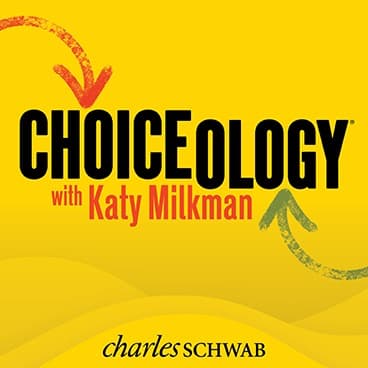The Buddy System: With Guests Max Maeder & Rachel Gershon
Pursuing a goal alone is convenient. Whether you're training for a marathon or aiming to read 20 books this year, it's convenient to move at your own pace and schedule. But having a gym buddy or a book club pal can make a bigger difference to your goal completion than you think.
In this episode of Choiceology with Katy Milkman, we look at the benefits of tandem goal pursuit in the context of training for a new Olympic sport: kite foiling.
Max Maeder is a 17-year-old kite foiling athlete and many-time world champion of the sport. Max is also a recent Olympic bronze medalist, having just represented Singapore at the 2024 Paris Games and winning the country's lone medal. To get to this point, Max has been working with the same training partner since 2021. And in this solo sport, working with a partner has made all the difference.
Next, Katy speaks with Rachel Gershon about their research on tandem goal pursuit and the many benefits of working toward goals with a partner. You can learn more in their working paper titled "Friends With Health Benefits: A Field Experiment."
Rachel Gershon is an assistant professor of marketing at the Haas School of Business at the University of California, Berkeley. Her research focuses on consumer judgments and choice with an emphasis on social, prosocial, and health-related behaviors.
Special thanks to Cam Farrar for use of his TikTok audio and the International Kiteboarding Association for use of their audio. You can find kite-foiling videos on the IKA's YouTube channel @kiteclasses.
Learn more about behavioral finance.
The comments, views, and opinions expressed in the presentation are those of the speakers and do not necessarily represent the views of Charles Schwab.
Data contained herein from third party providers is obtained from what are considered reliable source. However, its accuracy, completeness or reliability cannot be guaranteed and Charles Schwab & Co. expressly disclaims any liability, including incidental or consequential damages, arising from errors or omissions in this publication.
All corporate names and market data shown above are for illustrative purposes only and are not a recommendation, offer to sell, or a solicitation of an offer to buy any security. Supporting documentation for any claims or statistical information is available upon request.
Investing involves risk including loss of principal.
The book How to Change: The Science of Getting From Where You Are to Where You Want to Be is not affiliated with, sponsored by, or endorsed by Charles Schwab & Co., Inc. (CS&Co.). Charles Schwab & Co., Inc. (CS&Co.) has not reviewed the book and makes no representations about its content.
Apple, the Apple logo, iPad, iPhone, and Apple Podcasts are trademarks of Apple Inc., registered in the U.S. and other countries. App Store is a service mark of Apple Inc.
Spotify and the Spotify logo are registered trademarks of Spotify AB.



